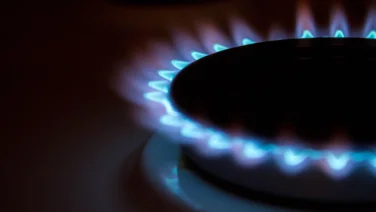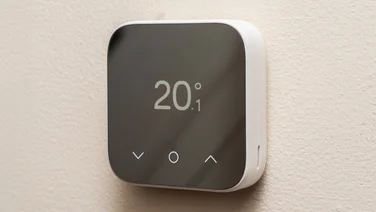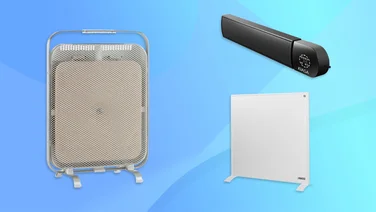To help us provide you with free impartial advice, we may earn a commission if you buy through links on our site. Learn more
- Get a free quote for solar panel installation
- How to choose the best solar battery storage for you
- What features should I look for in a solar battery?
- Best solar battery storage: At a glance
- The best solar battery storage you can buy in 2023
- 1. Enphase Encharge 10T: Best solar battery storage for UK homes
- 2. Moixa Smart Battery: Best solar battery for small households
- 3. Alpha Smile-B3-Plus: Best value solar battery storage
- 4. Tesla Powerwall 2: Best solar battery for electric car drivers
- 5. Huawei Luna 2000-10: Best solar battery for small spaces

The best solar battery storage systems collect electricity from your solar panels during the day, so you can use it to power your home after dark. In the UK, where the sun may only shine for a few hours a day (if you’re lucky) while you’re out at work, being able to bank that power is a big bonus.
Without a battery, solar electricity is basically “use it or lose it”. Any energy generated by your solar PV (photovoltaic) panels has to be used straight away, or it’s sent to the national grid for other people to use. So, if you need electricity after dark, it’s imported from the grid and billed to you. Adding a battery makes your solar PV system more efficient and sustainable, and slashes even more off your energy bills.
Solar batteries don’t come cheap, costing upwards of £2,000 upfront. A battery does eventually pay for itself by cutting your bills, but it’s still a significant investment. In this article, we’ll help you choose the best battery for your home, your budget and your energy usage.
Read on for our guide to choosing the best solar battery storage for you, or skip down the page for our pick of the best solar batteries you can buy in the UK.
Get a free quote for solar panel installation
Looking to find out how much solar panels could cost you? Take our quick survey below and we’ll provide a free quote for a service that suits your requirements.
How to choose the best solar battery storage for you
How much does solar battery storage cost?
It’s rare to find a solar battery for less than £2,000, and high-end models can cost more than £12,000; but £4,000 is about average – and prices are coming down.
In our list of the best solar battery storage systems below, the current typical prices listed are a guide. However, most batteries are available in various sizes with price tags to match. So, if you find a battery whose features really appeal to you but it seems too big and expensive, there’s every chance there will be a smaller, cheaper model available to buy instead.
READ NEXT: The best solar panels to buy
As is the case with solar panels, the actual price you pay will vary according to factors such as your PV system and your installer, so keep in mind that the prices below are a rough guide.
Is solar battery storage worth it in the UK?
Solar battery prices are coming down, but they’re still well into four figures. As such, you’ll want to consider the potential return on investment before making an investment.
A solar battery helps you save money by making much more efficient use of the solar energy your panels collect, whether you live in a bright or shady spot. There will be less wastage on sunny days, because you can store all that free electricity for use later, rather than having to give it away to the grid. And on dull days, or if you only ever use electricity in the evenings, there will be less need to buy top-up electricity from the grid, because you’ll have a ready store of energy.
Solar battery storage is a particularly good investment if you have a big, south-facing solar panel system that collects more energy on sunny days than you can use immediately. This is perfectly plausible in a sunny spot in the UK, because solar panels generate energy from the sun’s light, not from its heat.
A solar battery is an even better investment if you have an electric car, as long as you choose a DC-coupled battery system that supports vehicle charging.
How much electricity can a solar battery store?
Energy storage capacity is the most eye-catching feature of any solar battery system. Smaller battery systems can store around 2kWh (kilowatt hours, the measure of energy capacity), while a larger system holds 10kWh or more. Some high-end batteries can store well over 13kWh. Many new battery systems are modular, so you can start with a smaller capacity and then add more as needed.
According to renewable energy firm Renogy UK, a small 2kWh solar PV system produces around 10kWh on a sunny day with five hours of direct sunlight. And according to Ovo Energy, the average daily electricity use of a UK household is 8kWh.
If you don’t yet have solar panels but you’d like to estimate the size of battery to include with them, a couple of online tools can help. The Energy Saving Trust’s Solar Energy Calculator takes into account factors including the power of the panels you’re considering buying, where you live, and your electricity usage patterns to work out your kWh production per year. Your electricity bill can tell you how this compares with your energy usage.
For a more detailed month-by-month estimate, zoom into the map on the European Commission’s solar power GIS (geographical information system) online tool and use the dropdown boxes to select the type of PV array you have or are considering. The tool is pretty rough and ready, but its charts and graphs are a good insight into how much excess energy your panels could be storing in a battery.
For more information, check out Eco Expert’s guide to batteries for solar panels.
How long do solar batteries last?
Most solar batteries come with a 10-year warranty, and they require very little maintenance.
Solar battery storage systems tend not to last quite as long as solar PV panels themselves. If you end up using your panels for more than 20 years or so, you may need to replace the battery during the lifetime of your panels. Solar battery prices have been falling ever since they were first introduced around a decade ago, so you’re unlikely to have to pay quite so much for a replacement.
Can I get a grant for solar battery storage in the UK?
Only if you live in Scotland. The Scottish government offers 10-year, interest-free loans of up to £15,000 for energy-saving improvements, including solar battery storage. Find out more from Home Energy Scotland.
READ NEXT: Solar panel grants
What features should I look for in a solar battery?
Usable capacity – This is the amount of stored energy that you can actually use, after the small amount (usually 5-10%) used by the battery while charging and discharging. As we explain above, the average home is unlikely to need more than 10kWh capacity, unless you also run an electric vehicle, or your power goes down for days. Also bear in mind that very large-capacity batteries tend to be physically big, so you’ll need to find the space for it.
Depth of discharge (DoD) – This is the proportion of total capacity that’s usable. If a battery has a 100% DoD, then 100% of its total capacity is usable. That’s rare, but many modern lithium-ion batteries advertise a DoD of over 90%.
Size and weight – Small-capacity solar batteries are often no bigger than a PC tower, while large-capacity batteries can be as bulky as washing machines. If you’re short on space, look for a small or wall-mounted (radiator-style) solar battery. Some of our favourite batteries come in stackable modular systems with scalable capacity, so you can add more modules as needed.
Durability – Warranties aren’t quite as generous as they are for solar PV panel systems, but you can still expect limited warranties of 10 years as standard. Also check your battery’s cycle guarantee (how many times it’s guaranteed to completely discharge and recharge before losing performance). A high number of guaranteed cycles is a good indicator of the quality of the product, and of the manufacturer’s confidence in it.
Smart functions and app – The best new solar batteries can automatically calculate their charging patterns based on your panels’ energy production, your electricity usage habits, and even the weather forecast. Most batteries come with apps that provide remote control and monitoring, so you can check stats such as capacity, energy generation and charging status in real time.
Power cut support – Batteries with automatic power cut backup instantly kick in whenever the grid cuts out. They do this without feeding electricity back into the grid, to spare any poor engineers working to restore power!
AC- or DC-coupled – This refers to the way your solar battery links to your solar panel system. Some solar battery systems are AC-coupled (alternating current, like the national grid and most of your home appliances), while others are DC-coupled (direct current, like the electricity produced by solar panels). Historically, most residential solar batteries have been AC-coupled; but DC coupling is gaining in popularity, partly because it supports more uses, such as charging electric vehicles.
Best solar battery storage: At a glance
- Best for UK homes: Enphase Encharge 10T
- Best for small households: Moixa Smart Battery
- Best value solar battery: Alpha Smile-B3-Plus
- Best for charging electric vehicles: Tesla Powerwall 2
The best solar battery storage you can buy in 2023
1. Enphase Encharge 10T: Best solar battery storage for UK homes
Typical price: £7,990 | Find out more at Enphase

This sleek, radiator-style solar battery isn’t cheap, but it could transform the way you generate and use energy for a decade or more. Its Smart Switch intelligently toggles between solar, grid and battery power (and even a generator, if you have one) depending on your energy access and needs at the time, and it calculates when it makes more financial sense to send your excess electricity to the grid rather than storing it. The bundled app is excellent, offering numerous ways to monitor your power production, storage and usage.
This AC-coupled battery is easy to install because it connects quickly and safely with standard household AC wiring. It also includes a set of micro-inverters, which, like the main inverter in your solar PV system, converts the sun’s energy to electricity that you can use in the home. The inverter is often the part of a PV system that fails first, so an extra set of micro-inverters built into the battery delivers a welcome boost to the whole system’s life expectancy.
If the 10T is too big and expensive for you, then you’ll be glad to hear that it has a smaller sibling, the Enphase Encharge 3T (the 10T is effectively three 3Ts put together). The 3T has a 3.36kWh usage capacity and a typical price tag of £2,990.
Key specs – Installation: Wall-mounted; Usable capacity: 10.5kWh; Size: W1,283 x D188 x H775mm; Weight: 144kg; Warranty: 10 years
2. Moixa Smart Battery: Best solar battery for small households
Typical price: £4,450 | Find out more at Moixa

Moixa’s Smart Battery takes into account your home’s energy generation and usage patterns, and even the weather forecast, to create a charging plan that works best for your household and makes the most efficient use of your panels. All of this is easy to manage and monitor via the Moixa Dashboard and app, which display your real-time energy consumption and savings.
The Smart Battery works intelligently with the grid, too. Under its GridShare programme, it sends back any excess power that you don’t use, and rewards you for it. It won’t make you rich, but you do get £50 cashback every year for your first three years, and it extends your warranty.
The capacity of Moixa’s Smart Battery isn’t enough to take a large family off grid, and it doesn’t have power cut support. But it’s ideal for a couple who go out to work when the sun shines, and its customer service track record is outstanding.
Key specs – Installation: Wall-mounted; Usable capacity: 4.8kWh; Size: W525 x D200 x H770mm; Weight: 80kg; Warranty: 10 years
3. Alpha Smile-B3-Plus: Best value solar battery storage
Typical price: £3,000 | Find out more at Alpha

Solar battery storage specialist Alpha really understands its residential market. Most people don’t need a fridge-sized superbattery capable of charging the Tesla 4×4 in the driveway; they just require a bit of backup electricity for their use in the evening without having to resort to the grid. This all-in-one battery and 3kW inverter (the part of the system that converts solar energy to domestic electricity) fits the bill perfectly. When you need more capacity, you can add up to five more modules to expand the system up to a whopping 30kWh of usable capacity; but this lightweight, free-standing battery – with just shy of 5kWh of usable capacity – is the ideal starter device for storing energy for your home.
All batteries in the Smile range look neat and tidy, with a cover that comes away easily for services and installation. The product warranty is only five years, but the battery warranty covers 10 years of performance.
Key specs – Installation: Standing; Usable capacity: 4.79kWh; Size: W640 x D250 x H725mm; Weight: 60kg; Warranty: 5-10 years
4. Tesla Powerwall 2: Best solar battery for electric car drivers
Typical price: £9,500 | Find out more at Tesla

Tesla is probably the biggest name in batteries since Duracell. Just as its cars are helping to make electric motoring mainstream, so its Powerwall units are helping to make batteries a standard part of any solar panel system.
The huge 13.5kWh capacity of the Powerwall 2 will keep your home powered and heated for days on end during dark winter days, and you can also use it to fully recharge a large vehicle. If the sun isn’t shining enough to fill it to capacity, you can charge it from the grid, too, although of course you’ll need to pay for that – but it’s a very useful backup function, especially if you have cars to keep fed with electricity. There’s no power cut support, though.
Despite its massive capacity, this good-looking battery is one of the lightest in our lineup, and its whisper-quiet in operation, too.
Key specs – Installation: Wall or standing; Usable capacity: 13.5kWh; Size: W755 x D155 x H1,150mm; Weight: 125kg; Warranty: 10 years
5. Huawei Luna 2000-10: Best solar battery for small spaces
Typical price: £5,200+ | Find out more at Huawei

Huawei’s modular batteries look like futuristic briefcases, and can be added together to create a solar storage system with a capacity of anything between 5kWh and a whopping 30kWh. The model we’re looking at here is the Luna 2000-10, which has a 10kWh capacity but (like all the units in the series) measures just 150mm deep – handy, if you want to install it in a spot where space is at a premium, such as under the stairs. It’s even safe to install outside, but only if you live more than half a kilometre from the sea!
The main catch with the Luna is that it only works with Huawei inverters. So if you already have a solar PV system with an inverter by another company, which is highly likely, then you’ll need to replace it with a compatible Huawei model before you can use this battery. There’s also no power cut support, but you can add this with a Huawei Backup Box (around £550).
Key specs – Installation: Wall-mounted or standing; Usable capacity: 10kWh; Size: W670 x D150 x H960mm; Weight: 114kg; Warranty: 10 years






